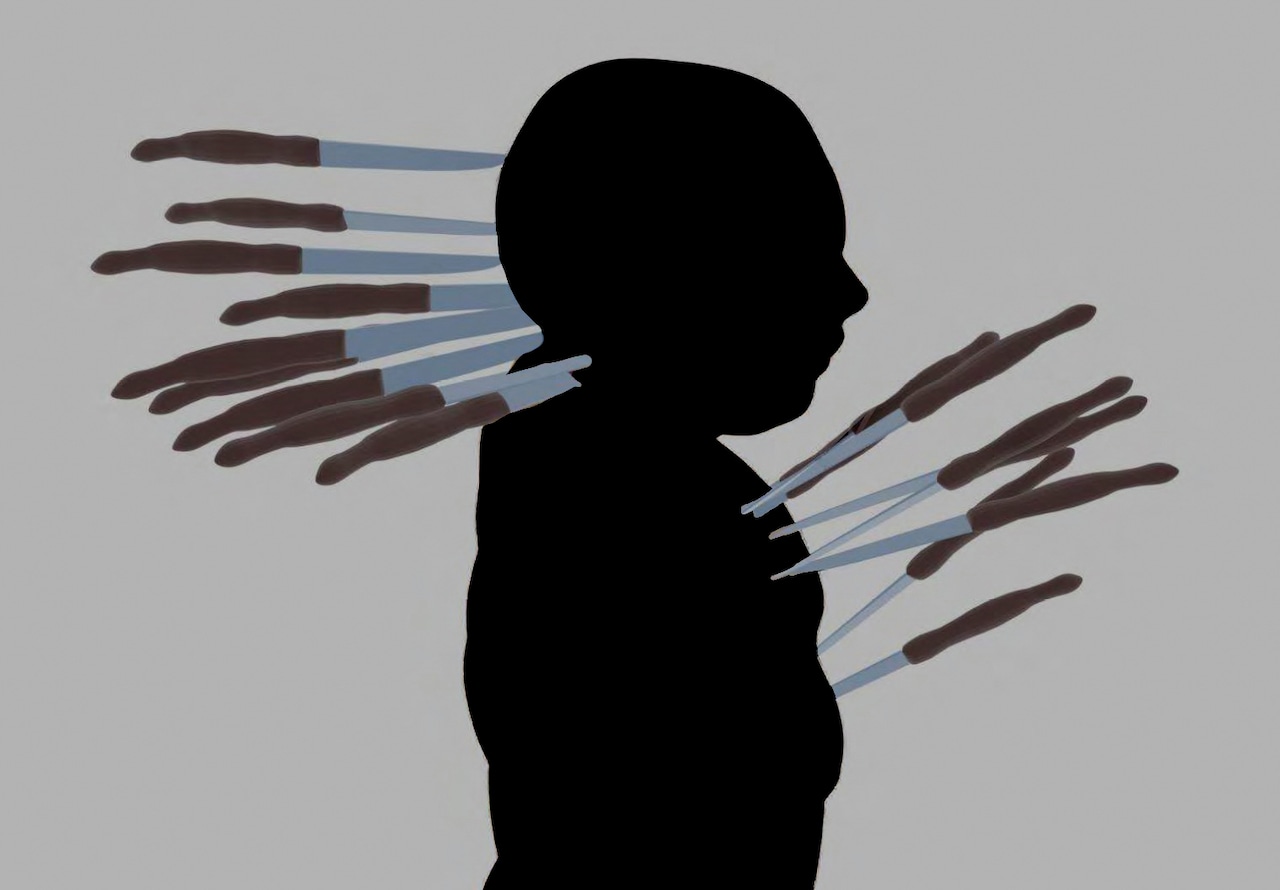The Philadelphia Medical Examiner’s Office isn’t just standing by the suicide ruling in Ellen Greenberg’s controversial 2011 death by 23 stab wounds.
It’s doubling down, citing 10 findings the office says confirms Ellen took her own life as part of 35-page report based on six-month re-examination of all the evidence in the case.
But the Philadelphia lawyers hired by Ellen Greenberg’s parents to challenge the suicide ruling aren’t having any of it.
Attorney Joe Podraza called the new report “a deeply flawed attempt to justify a predetermined conclusion. It includes false claims … ignoring key evidence that contradicts suicide.”
“This report is tripe, an embarrassment to the city, and an insult to Ellen and her family. Ellen’s family just wanted the truth. It is clear the truth will not come from Philadelphia’s law enforcement machinery,” Podraza added in an emailed statement on Monday.
Said Ellen’s mother, Sandee, in a phone interview with PennLive: “It’s very distressing to suffer this injustice. It’s a sad for Pennsylvanians.”
The reexamination of the 27-year-old Philadelphia teacher’s 2011 death was promised by the city as part of a civil lawsuit settlement with Ellen’s parents, Joshua and Sandee Greenberg, that was finalized in April. The settlement also included a $650,000 payment for monetary damages to the Greenbergs.
The report, signed by Philadelphia Chief Medical Examiner Lindsay Simon, contains an exhaustive review of all the evidence in the case, including findings by Philadelphia police and medical examiner but also a bevy of forensic experts hired by the Greenbergs to fight the suicide ruling.
In the end, Simon and her office cite 10 findings that caused them to double-down on its “opinion with a reasonable degree of medical certainty” that Ellen took her own life.
The findings are:
- Ellen suffered “severe” anxiety over her first-grade teaching job at the time of her death. She was being treated by a psychiatrist for approximately two months. Bottles for alprazolam, clonazepam, and zolpidem prescribed to Ellen were recovered from a bedside table on the evening of her death.
- While calling the “distribution of the 23 stab wounds admittedly unusual,” Ellen would be capable of self-inflicting all these injuries — even those to the back of her head and neck, the report concluded.
- At least 8 shallow stab wounds “would best be categorized as hesitation wounds” – an indication of suicide by stabbing. The review identified at least three more of this type of wound, upping the total number of stab wounds Ellen sustained from 20 to 23.
- Ellen sustained no defensive injuries, which are a tell-tale sign of being attacked by an assailant. The 31 contusions or bruises found on Ellen’s body aren’t consistent with “intentional infliction by another.” Most of the bruises were in the process of healing. Their distribution is consistent with “incidental contact sustained during activities of daily living, including her work as a first-grade teacher,” the report concluded.
- There was no evidence to indicate Ellen was incapacitated or incapable of defending herself, something that would explain the noted lack of defensive wounds.
- The DNA of Ellen’s live-in fiancé, Sam Goldberg, wasn’t detected on the knife used to inflict her injuries.
- Goldberg’s self-reported timeline of events on the afternoon and evening of Ellen’s death is corroborated by phone logs, text messages, surveillance footage, keycard swipes and police interviews.
- There’s no evidence Ellen was in an abusive relationship with Goldberg. A review of their text messages showed the two were often separated due to his work travel. There were no texts where Ellen mentioned hostility or mistreatment, and she never expressed fearing him, the report states.
- There was no evidence of a third party being in the apartment on the day of Ellen’s death, nor was anyone else’s DNA detected on the knife used to stab Ellen to death.
- No findings of a struggle were present at the scene, and no valuables were reported missing from the apartment.
The lack of hemorrhage from a wound to Ellen’s spinal cord has been cited as a “smoking gun” indicating homicide by the Greenbergs and their team of experts. It indicates Ellen’s heart wasn’t beating when the cut was made – an impossibility in a suicide by stabbing.
But the new medical examiner’s report dismisses all this, concluding the spinal cord wound was most likely an accidental cut that occurred during Ellen’s autopsy — not when she was stabbed.
“Ellen was alive when all the stab and incised wounds were inflicted,” the report states. “The preponderance of the evidence suggests the (spinal cord cut) was an artifact from the autopsy.”
Podraza blasted this conclusion.
“The assertion that a stab wound in Ellen’s spinal column was made during autopsy, a theory rejected by every credible expert, including the City’s own neuropathologist,” the attorney said in an emailed statement Monday.
 This image is the result of a 3D computer analysis of the trajectory and depth of all 20 of Ellen’s stab wounds. The analysis was commissioned by the family of Ellen Greenberg and conducted by BioMX Corp., a Virginia-based independent computational biomechanics engineering consulting company that reconstructs accidents and “criminal injuries” for court cases.
This image is the result of a 3D computer analysis of the trajectory and depth of all 20 of Ellen’s stab wounds. The analysis was commissioned by the family of Ellen Greenberg and conducted by BioMX Corp., a Virginia-based independent computational biomechanics engineering consulting company that reconstructs accidents and “criminal injuries” for court cases.
Podraza said an extensive 3D photogrammetry recreation commissioned by the Greenbergs proved Ellen couldn’t have self-inflicted the stab wounds to the back of her head and neck. The medical examiner’s report characterized these same wounds as “admittedly unusual” — but not impossible — in a suicide.
The lawyer accused the ME’s report of “ignoring key evidence that contradicts suicide,” adding:
“Simon builds a flimsy case on distorted portrayals of Ellen’s mental health, propped up by cynical distortions of Ellen’s managed anxiety, a condition widely experienced daily by over 40 million Americans. Shame on you Simon.”
Sandee Greenberg said she and Josh were still reviewing the report but find it riddled with “false representations or information taken out of context.”
The new report comes just weeks after a new true crime docuseries based on the Greenberg case began streaming on Hulu and Hulu oh Disney+. “Death in Apartment 603: What Happened to Ellen Greenberg?”, shines nationwide attention on the Greenbergs’ 14-year fight for “justice for Ellen.”
What’s unclear is the next step in the Greenberg’s 14-year battle to prove their daughter, who was raised in Harrisburg, didn’t take her own life. But Podraza promised it’s far from over.
“Though Ellen’s city turned its back on her, we will continue through other avenues to get justice for her murder, by any means necessary,” he said.
Background on the case:
The narrative of suicide in Ellen’s death was set moments after her body was discovered bloody and lifeless on her kitchen floor, slumped against a cabinet on the snowy, stormy evening of Jan. 26, 2011.
Ellen was found with 23 stab wounds, many to the back of her head and neck. The final blow left a 10-inch kitchen knife protruding from her chest.
Ellen’s fiancé, Sam Goldberg, said he returned from working out in the Manayunk apartment complex gym to find the door to the apartment he shared with Ellen latched from inside. She didn’t respond to his knocks, calls and texts.
Goldberg later told police he had to break the inner door latch to enter and found Ellen slumped and bloodied on the kitchen floor. His account of breaking into the apartment was later called into question by other evidence.
During Goldberg’s recorded 911 call he said, among other things, that Ellen had “stabbed herself.” Responding police and a medical examiner official also treated Ellen’s death as a suicide on the evening of her death.
At the time, Ellen, a former graduate of Susquehanna Township High School and Penn State, was seeing a psychiatrist and being medically treated for anxiety. Apparently assuming her death was suicide, police did not treat the bloodied apartment as a crime scene that evening.
Ellen’s body was shipped off to the city morgue with the knife still protruding from her chest. The very next day, assistant Philadelphia Medical Examiner Dr. Marlon Osbourne conducted his autopsy and ruled her death a homicide. He cited “multiple stab wounds by an unknown person.”
City detectives returned to the apartment the following day with a search warrant and a forensics team. But by then, the place had been professionally sanitized, wiping away potential evidence.
The homicide investigation quickly foundered, and detectives on the case met at least twice with ME officials to argue Ellen had killed herself.
On April 4, 2011, Osbourne changed the manner of Ellen’s death to suicide — a ruling he publicly disavowed as part of his own court settlement with the Greenberg’s earlier this year. But because Osbourne is no longer with the Philadelphia ME’s office, he had no power to change the ruling in Ellen’s death.
The suicide ruling in the Greenberg case is crucial because until Ellen’s death is changed to either “undetermined” or “homicide,” it’s a practical impossibility to launch a new criminal investigation into her bizarre, highly suspicious death, the Greenbergs have said.
If you purchase a product or register for an account through a link on our site, we may receive compensation. By using this site, you consent to our User Agreement and agree that your clicks, interactions, and personal information may be collected, recorded, and/or stored by us and social media and other third-party partners in accordance with our Privacy Policy.
